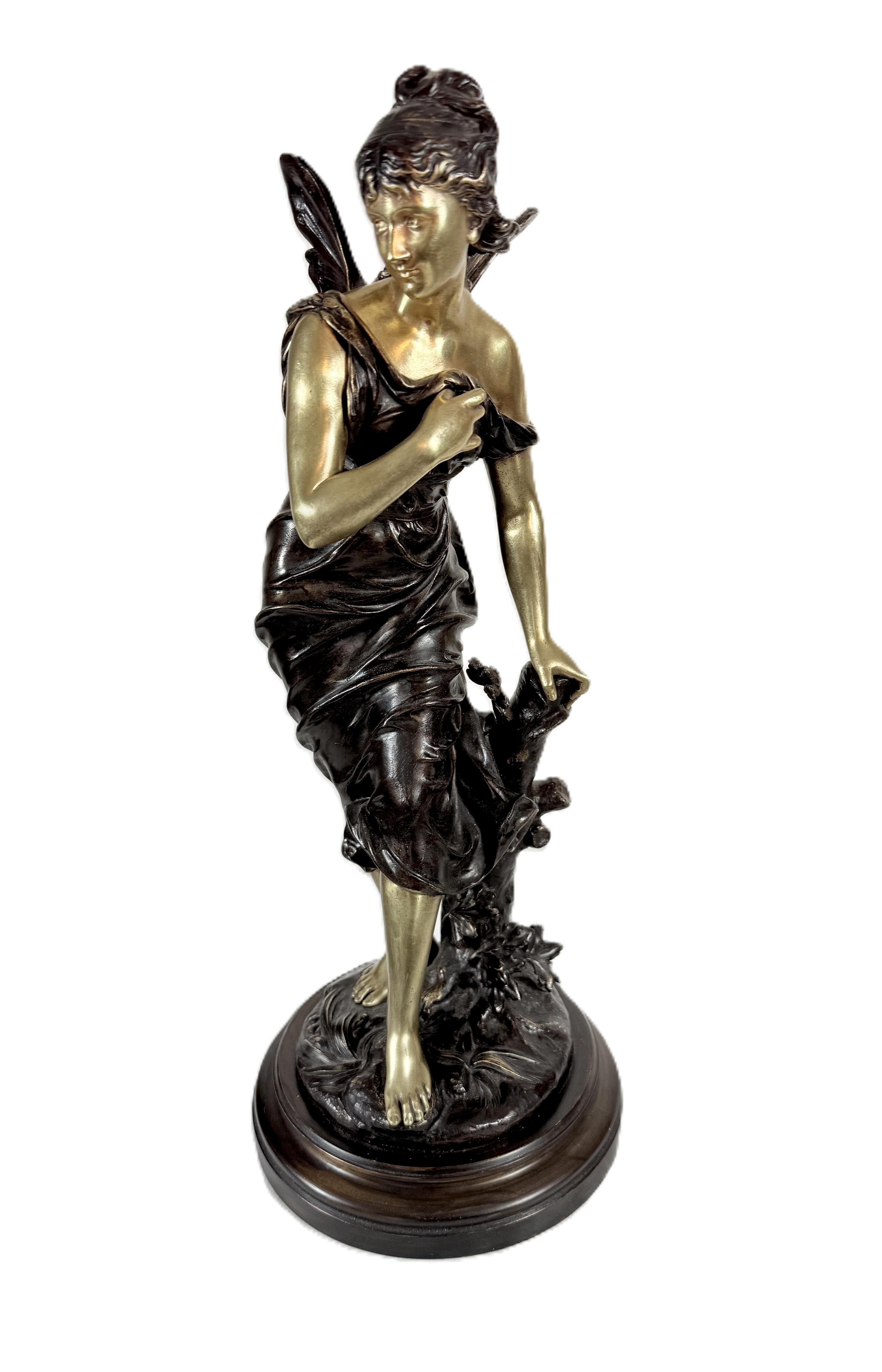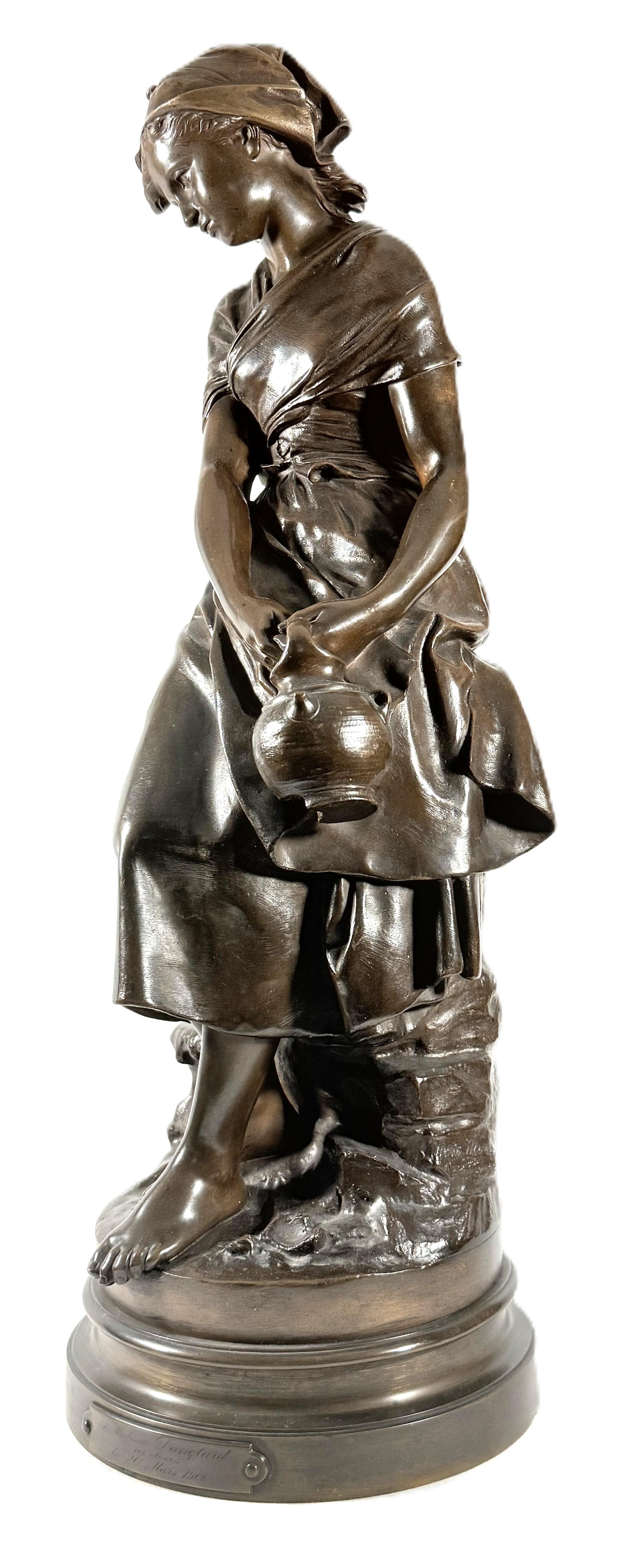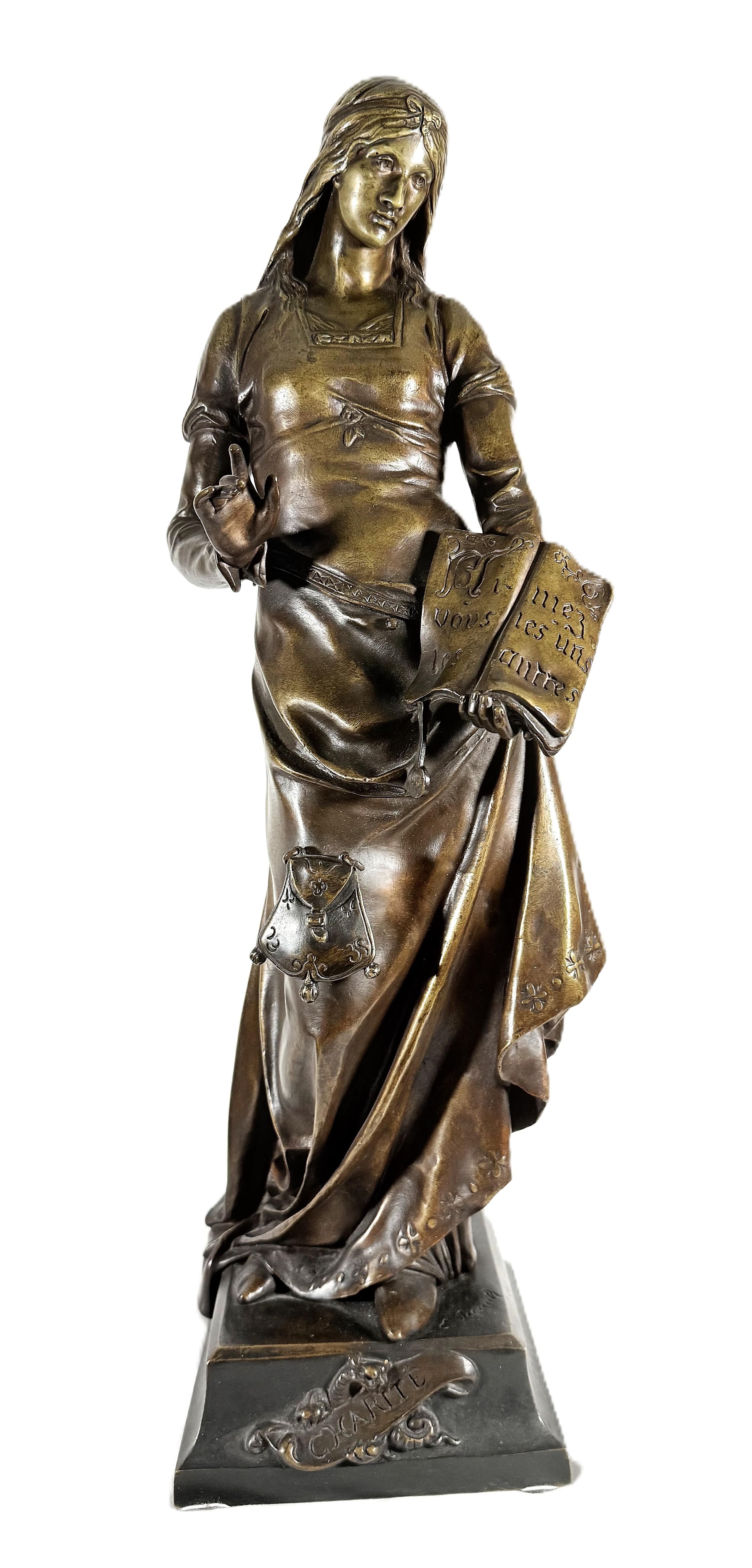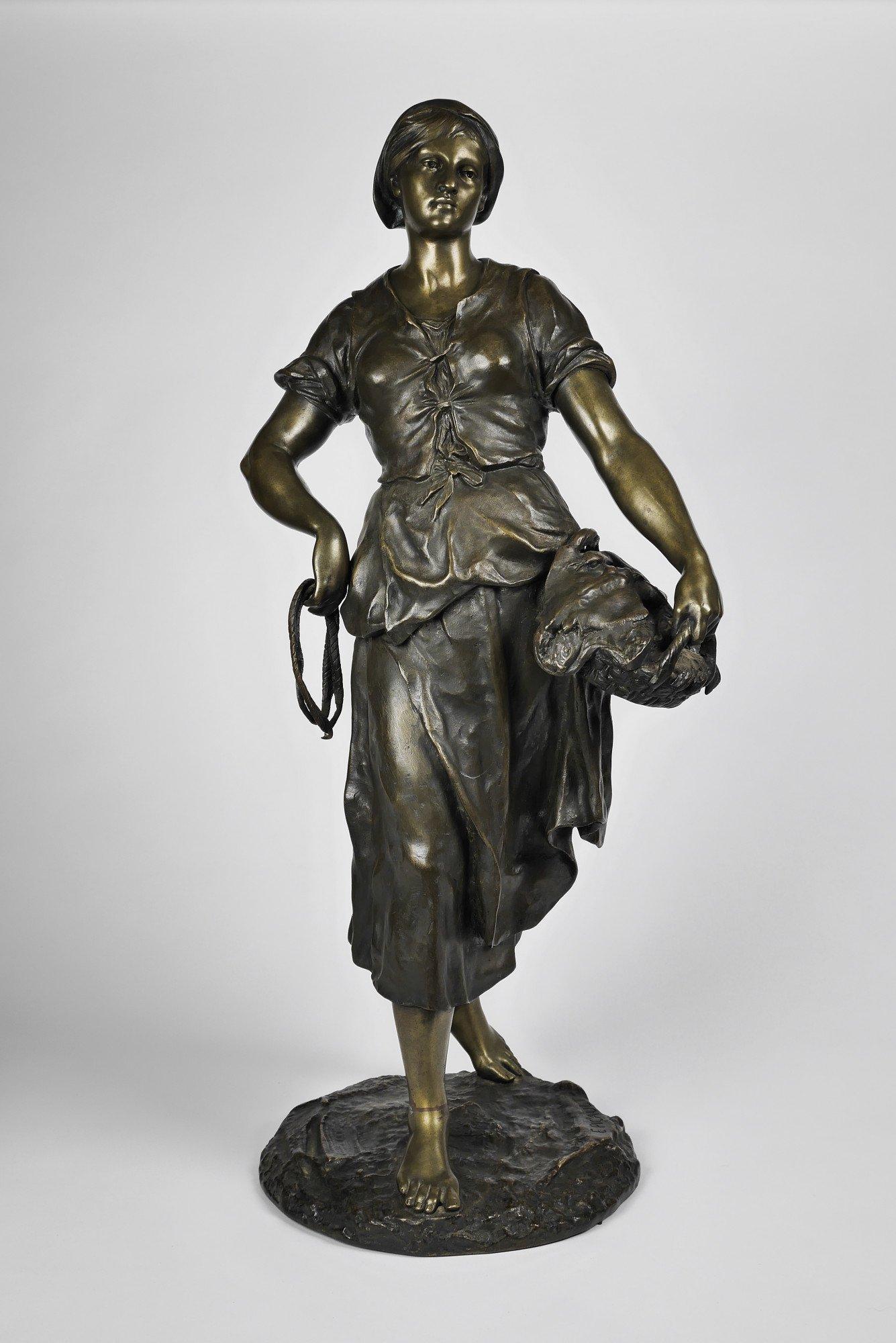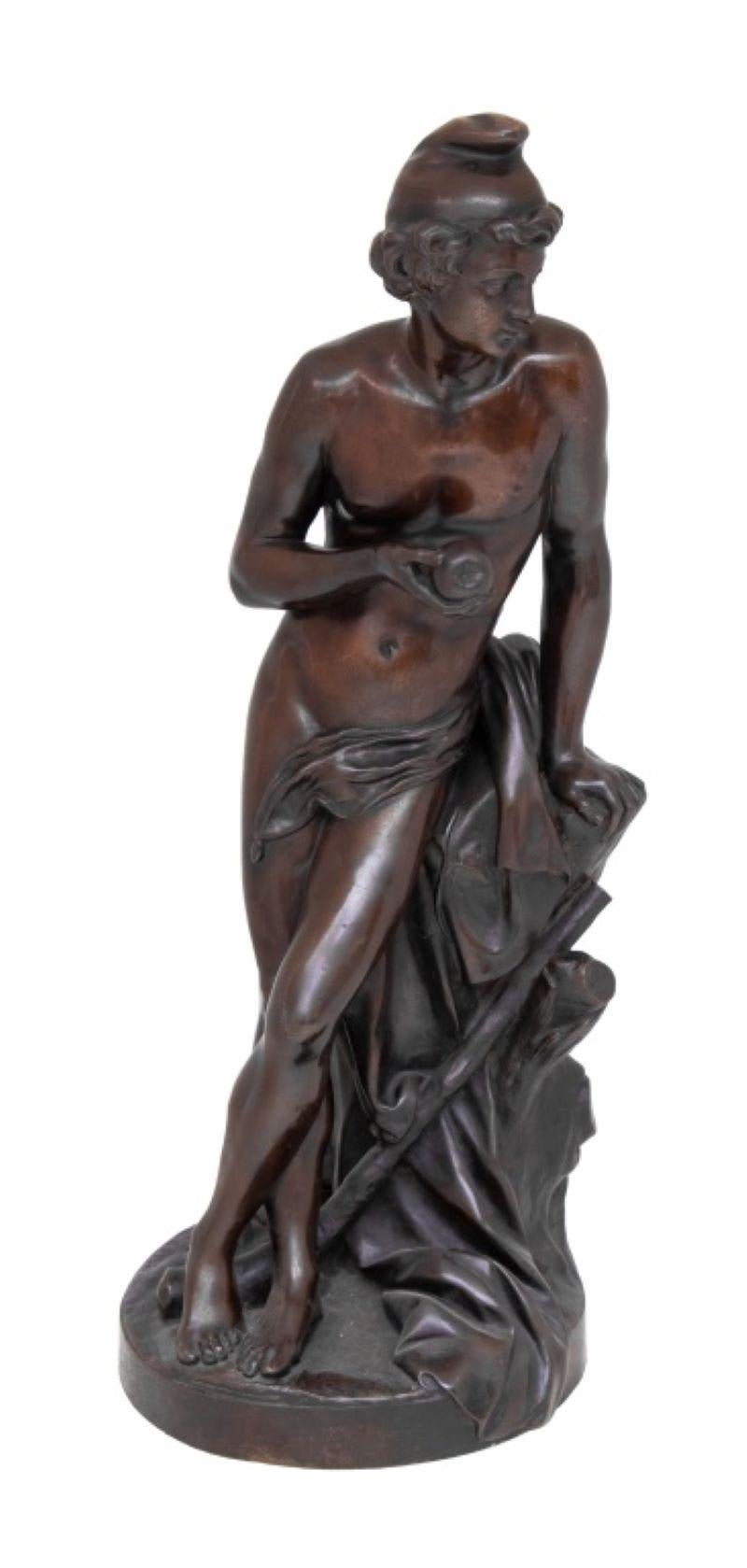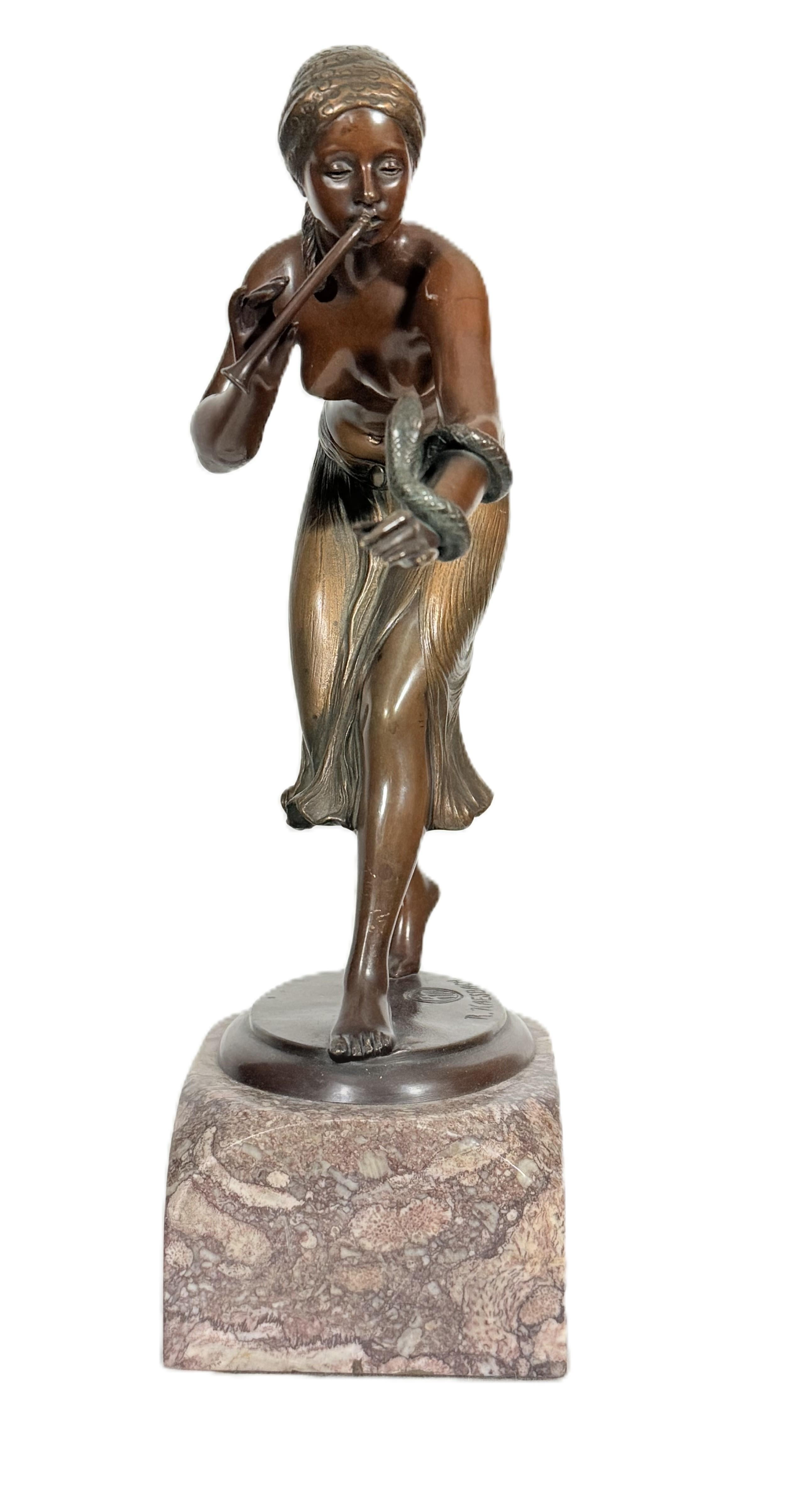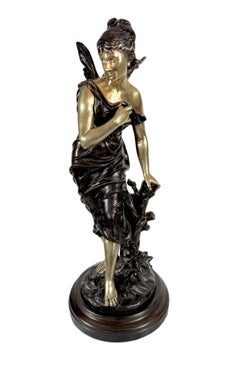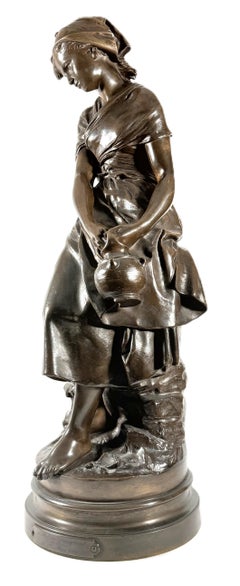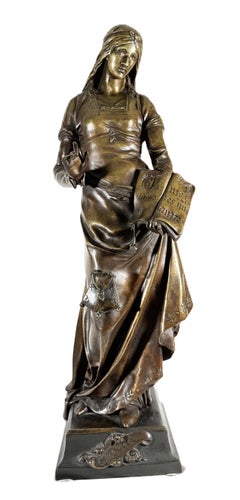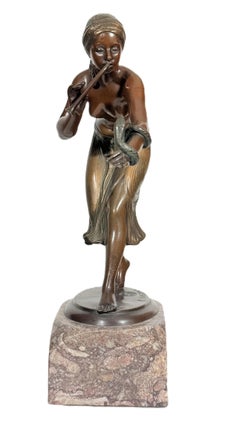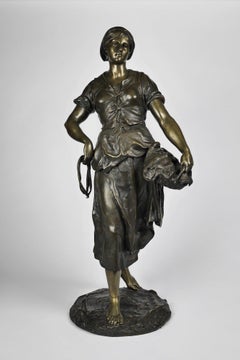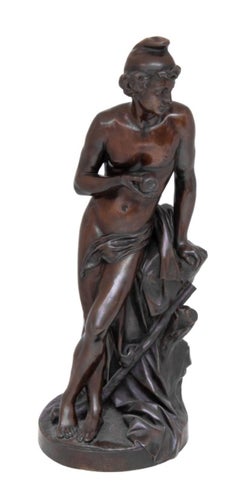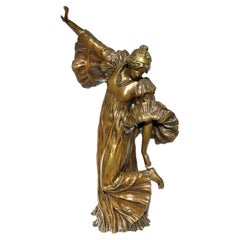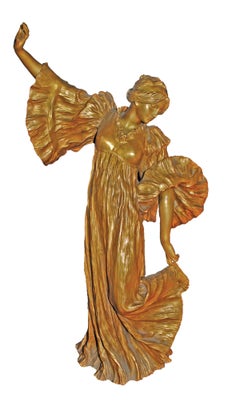Items Similar to Eugène Laurent (1832-1898), The Beachcomber
Video Loading
Want more images or videos?
Request additional images or videos from the seller
1 of 14
Eugène Laurent Eugène Laurent (1832-1898), The Beachcomber1895
1895
$6,002.77
£4,501.04
€5,050
CA$8,376.07
A$9,068.84
CHF 4,821.48
MX$109,376.45
NOK 60,632.88
SEK 56,527.11
DKK 38,471.44
About the Item
Eugène Laurent (1832-1898),
The Beachcomber
Inscribed "E. Laurent" on the base plate in the cast.
H 63 cm
Eugène Laurent studied at the École des Beaux-Arts in Paris and was awarded a prize by the Academy in 1860. E. Laurent was a student of T. Coinchon and the École des Beaux-Arts, which awarded him a prize in 1860. From 1861 to 1893, he exhibited his statues, groups, portrait busts, and medallions at the Salon. He then joined the studio of Jacques Antoine Theodore Coinchon. As a freelance artist, he exhibited statues, portrait busts, and medallions at the Paris Salon from 1861 to 1893.
He also created large-scale sculptures such as the Jacques Callot monument in Nancy (1877) and the statue of François Boucher at the Paris City Hall. He created public monuments such as his Jacques Callot in Nancy and his François Boucher in the Hôtel de Ville in Paris.
References
Pail Kjellberg, "Les bronzes du 19ème siècle, dictionnaire des sculpteurs," Les Editions de l'Amateur,
Harold Berman, "Bronzes Sculptors & Founders I-IV"
- Creator:Eugène Laurent (1832 - 1898, French)
- Creation Year:1895
- Dimensions:Height: 24.81 in (63 cm)Width: 7.09 in (18 cm)Depth: 7.09 in (18 cm)
- Medium:
- Movement & Style:
- Period:
- Condition:Wear and tear according to age and use.
- Gallery Location:Berlin, DE
- Reference Number:1stDibs: LU2877216613222
About the Seller
New to 1stDibs
Joined in the past six months.
No Reviews Yet
Vetted Professional Seller
Every seller passes strict standards for authenticity and reliability
Established in 1990
1stDibs seller since 2025
- ShippingRetrieving quote...Shipping from: Berlin, Germany
- Return Policy
More From This Seller
View AllEutrope Bouret (1833-1906) Psyché
By Eutrope Bouret
Located in Berlin, DE
Eutrope Bouret Bronze
Spyche
Eutrope Bouret (French, 1833-1906)
Late 19th century.
Signed on the base
Bouret (French, 1833–1906) was an important 19...
Category
19th Century Jugendstil Figurative Sculptures
Materials
Bronze
Beautiful late 19th-century bronze sculpture by Mathurin Moreau
By Mathurin Moreau
Located in Berlin, DE
Beautiful late 19th-century bronze sculpture by Mathurin Moreau
"YOUNG WOMAN ON A ROCK" BY MATHURIN MOREAU (1822-1912)
Young girl with a broken jug,
Bronze circa 1880/1890, France
...
Category
Late 19th Century Jugendstil Figurative Sculptures
Materials
Bronze
Französische Bronze Emile Louis Picault „Charity-Bien Faisance“
By Émile Louis Picault
Located in Berlin, DE
Bronze Emile Louis Picault
"Charity-Bien Faisance," a French bronze figure by Emile Louis Picault.
50 cm
Bronze signed Emile Louis Picault. With cast stamp.
Wonderful work with a ...
Category
1890s Jugendstil Figurative Sculptures
Materials
Bronze
Rudolf KAESBACH (1873-1955) Bronze Jugendstil
By Rudolf Kaesbach
Located in Berlin, DE
Rudolf KAESBACH (1873-1955), "Snake Charmer"
Inscribed 'R. Kaesbach' on the plinth and with the foundry mark, height with base: approx. 30.2 cm
Founding mark RM
Rosenthal & Maeder ...
Category
Early 20th Century Figurative Sculptures
Materials
Bronze
Hebe Par Drouot Edouard Drouot (French, 1859-1945)
Located in Berlin, DE
Bronze, beautifully cast, patinated. Above a fluted round base, the figure of the Greek goddess of youth. Hébé is depicted here rising in a tight-fitting robe before an eagle, the sy...
Category
Early 20th Century Jugendstil Figurative Sculptures
Materials
Bronze
Emile Louis Picault (1833-1915), 'Gloria et Fama'
Located in Berlin, DE
Bronze
67,5 cm
signed
restored Partina original
Émile Louis Picault (1833–1915) was a French sculptor known for his dynamic bronze works, often depicting mythological, allegorical,...
Category
20th Century Jugendstil Figurative Sculptures
Materials
Bronze
You May Also Like
The Fisherwoman, 19th century French bronze sculpture
By Émile Louis Picault
Located in Beachwood, OH
Émile Louis Picault (French, 1833-1915)
Fisherwoman
Bronze
Stamped "E. Picault"
30 x 15 x 12 inches
Subject depicting a young woman holding fishing line in one hand a basket of fis...
Category
19th Century Figurative Sculptures
Materials
Bronze
Émile Louis Picault Bronze Sculpture
By Émile Louis Picault
Located in Astoria, NY
Emile Louis Picault (French, 1833-1915) "Paris" Patinated Bronze Sculpture, late 19th century, the standing figure holding a golden apple, signed to base. 32" H x 12" W x 12" D. The ...
Category
Late 19th Century Art Nouveau Figurative Sculptures
Materials
Bronze
Agathon Leonard (Fr 1841-1923 Danseuse Au Cothurne
By Agathon Léonard
Located in Dallas, TX
AGATHON LÉONARD (FRENCH, 1841-1923) Danseuse au Cothurne
Signed 'A Léonard' (on reverse) with Susse Frères foundry cachet, further stamped 'M'
Gilt Bronze, light brown patina
21 i...
Category
Antique Early 1900s French Art Nouveau Figurative Sculptures
Materials
Bronze
La Cothurne
By Agathon Léonard
Located in Missouri, MO
"La Cothurne" 1901
Gilt Bronze
Approx 21.5" High (to raised hand)
Signed and Dated
Foundry Mark "Susse Freres"
Originally modeled in white biscuit porcelain this Greek dancer is a from a set of eight created for a dining table. They were immediately successful when they were exhibited in the Sevres pavilion at the 1900 Exhibition. Individual figures could be ordered and "La Cothurne" proved the most popular. Their success led to the firm of Susse buying the right to cast versions in metal.
Agathon Leonard (1841-1923) is one of the well-known French Art Nouveau sculptors. Born in Lille in 1841, he first studied there before moving to Paris where he studied at the Ecole des Beaux Arts under Eugene Delaplanche.
He gained recognition at the annual Expositiones Universelles, winning a Silver Medal there in 1889 and gold in 1900. His most important piece, Jeu L'echarpe, was the best known series of Sevres production at the turn of the century and sold out at the 1900 Expo in Paris and later was given as a gift by the French Gov't to Nicholas II at the Hermitage.
His bronzes were cast at the Susse Freres Editeurs Foundry. He worked also in marble, quartz and ivory. He also produced Art Nouveau medallions...
Category
Early 1900s Art Nouveau Figurative Sculptures
Materials
Bronze
Price Upon Request
Bronze Sculpture Signed G. Obiols, Titled "Pecheuse Bretonne", France
By G. Obiols
Located in Buenos Aires, Buenos Aires
Bronze sculpture signed G. Obiols, titled "Pecheuse Bretonne", France, late 19th century.
Category
Antique Late 19th Century French Art Nouveau Figurative Sculptures
Materials
Bronze
'La Sémeuse', Large Art Nouveau Bronze Figure After Oscar Roty, Vienna, Ca 1899
By Hans Schörk
Located in Vienna, AT
A young woman in a long dress with short sleeves, softly enveloping her body, with a scarf covering her hair and falling well over her face to protect her from the burning sun, walking across the field at a leisurely pace, holding out her apron with the seeds spread out in front of her with her left hand and making a sweeping gesture with her right.
On a narrow, elongated natural plinth with rounded corners, with the artist's signature ‘Schork 99’ incised on the side, as well as the Goldscheider manufactory's pressed stamp, pressed model number and incised monogram ‘AH’ on the back behind the figure.
This motif is particularly well known in France, where it adorned all French franc coins and postage stamps for many years and was continued in a stylised form on all cent coins of the euro after 2001.
Louis Oscar Roty (1846 - 1911) This sower is very familiar to the French: she was depicted on the fifty-centime coin and on the one-, two- and five-franc coins until 2001, when a stylised version of her appeared on the ten-, twenty- and fifty-centime coins of the euro. The figure dates back to 1887, when Roty designed a prize medal for the Ministry of Agriculture, a project that was not pursued. When the Minister of Finance commissioned new coins in 1896, Roty was among the selected artists. He drew on the Sower of 1887, but transformed his robust farmer into a slender Marianne, who wore the Phrygian cap of freedom. The traditional profile of the Republic was abandoned in favour of a more active, standing figure. This effigy was criticised, but generally very well received: ‘The seeds she generously throws into the earth are the countless ideas that may one day germinate and flourish when we are no longer here’ (La Liberté, 8 October 1898). The gesture is more symbolic than realistic – we do not sow against the wind, which nevertheless makes the hair behind the sower flutter – but it makes the composition more dynamic. Originally, ‘The Sower’ was used on the fifty-centime to two-franc coins introduced in 1897 and 1898, before appearing on postage stamps in 1903. It is thus the most widely circulated work of art in France. Although not included in the Musée d'Orsay's medal collection, this wax drawing on slate, typical of the technique of a medallist, is one of the most beautiful pieces and demonstrates the virtuosity of Roty. (Musée d'Orsay, The Collections)
Design by HANS SCHORK...
Category
Antique Early 1900s Austrian Art Nouveau Figurative Sculptures
Materials
Bronze
